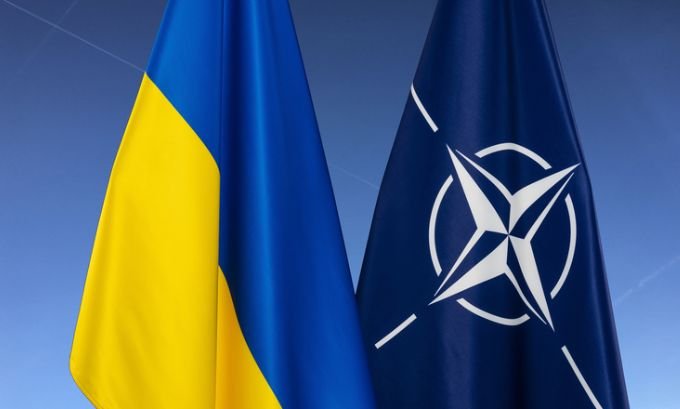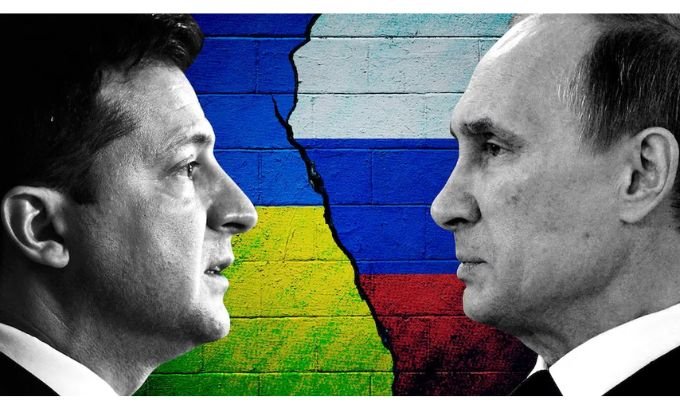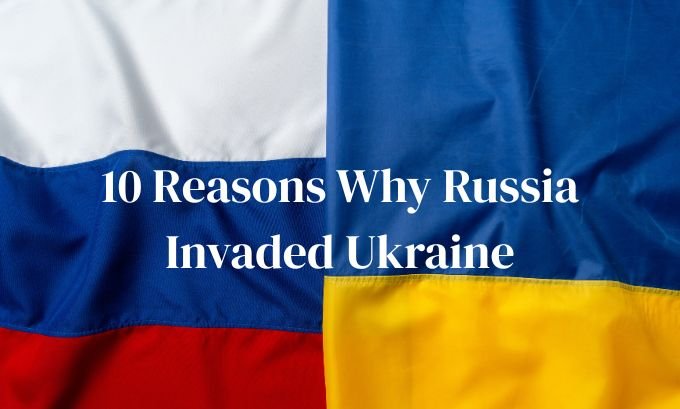On February 24, 2022, Russia launched a full-scale invasion of Ukraine, an act that sent shockwaves across the globe. Labeled a “special military operation” by Moscow, the offensive marked the beginning of the largest conflict in Europe since the Second World War. Russia presented several justifications for its actions, but international observers largely view these as pretexts for unprovoked aggression.
Understanding the motivations behind this war is complex. It involves a mix of long-standing geopolitical tensions, security anxieties, historical narratives, and domestic political calculations. This article breaks down the ten key reasons cited by Russia and analyzed by experts to provide a clear picture of why the invasion occurred.
Table of Contents
The Top 10 Reasons Behind Russia’s Invasion
1. NATO’s Eastward Expansion
For decades, Russia has voiced strong opposition to the eastward expansion of the North Atlantic Treaty Organization (NATO). From Moscow’s perspective, the potential for Ukraine to join this military alliance was a direct threat. Russian leaders feared that Ukraine’s membership would bring NATO troops and infrastructure to its very doorstep, effectively eliminating a strategic buffer zone. This concern has been a central theme in Russian foreign policy since the end of the Cold War.

2. Perceived Security Threats
Closely tied to NATO expansion are Russia’s broader security concerns. The Kremlin argued that the placement of Western missile defense systems and military bases in Ukraine would pose an existential threat to Russian national security. Moscow repeatedly warned that it would not tolerate what it considered a military buildup by a hostile alliance on its border, framing its actions as a defensive measure to neutralize this perceived danger.
3. Countering Western Influence
Russia has long sought to maintain its sphere of influence over former Soviet states. Ukraine’s steady pivot toward the West, including closer political and economic ties with the European Union (EU) and the United States, was seen as a major challenge to this dominance. The Kremlin viewed this growing Western influence as an effort to peel Ukraine away from Russia’s orbit and integrate it into a rival bloc, undermining Moscow’s regional power.
4. Securing Crimea and Black Sea Access
After annexing the Crimean Peninsula in 2014, Russia’s strategic goals shifted to securing its long-term control over the region. The Black Sea provides vital access for Russian trade and is crucial for projecting military power into the Mediterranean and beyond. A pro-Western Ukraine could have threatened this access, particularly to the naval base at Sevastopol. The invasion was partly aimed at cementing Russia’s hold on Crimea and its maritime routes.
5. Protecting Russian-Speaking Populations
A key justification offered by Moscow was the protection of Russian-speaking minorities in eastern and southern Ukraine, particularly in the Donbas region. Russia claimed these populations were facing persecution and genocide. In 2014, it began supporting separatist movements in the Donetsk and Luhansk oblasts, and just before the 2022 invasion, it officially recognized their independence. This narrative of “protection” served as a powerful pretext for military intervention.
6. The “De-Nazification” Claim
One of the most controversial justifications was President Vladimir Putin’s claim that Russia needed to “de-Nazify” Ukraine. He accused Ukraine’s government of being controlled by neo-Nazis, a charge widely dismissed as baseless propaganda. Ukraine is a democratic country with a Jewish president, Volodymyr Zelenskyy, who won a landslide election. This rhetoric was seen as an attempt to delegitimize Ukraine’s leadership and rally domestic support by invoking the memory of World War II.
7. Demilitarizing Ukraine
Russia stated its goal was to weaken Ukraine’s military capabilities to the point where it could no longer pose a threat. This objective of “demilitarization” was aimed at preventing Ukraine from becoming a formidable, Western-backed military power on its border. By degrading Ukraine’s armed forces and defense infrastructure, Moscow hoped to ensure the country would remain a neutral or compliant neighbor.
8. Reclaiming “Historical Russia”
Putin has frequently expressed a view of Ukraine as an integral part of Russia’s historical and cultural sphere, not a truly sovereign nation. In essays and speeches, he has argued that modern Ukraine was an artificial creation of the Soviet era and that Russians and Ukrainians are “one people.” From this perspective, the invasion was framed as a mission to restore Russia’s “historic lands” and correct what he saw as the mistakes of the past.
9. Domestic Political Calculations
The invasion also served domestic political purposes. By stirring up nationalist sentiment and framing the conflict as a defensive struggle against Western aggression, the Kremlin aimed to bolster Putin’s approval ratings and solidify his grip on power. A successful military campaign could distract the Russian public from internal economic problems and suppress political dissent, uniting the country around the flag.
10. Challenging the U.S.-Led Global Order
On a broader geopolitical scale, the invasion was a direct challenge to the post-Cold War international order dominated by the United States. By demonstrating its willingness to use military force to achieve its objectives, Russia sought to assert itself as a major global power and reshape the balance of power. The war can be seen as an attempt to end an era of American unipolarity and carve out a new, multipolar world order.

How the World Responded
The invasion triggered swift and varied reactions globally:
- Ukraine immediately declared the invasion an unprovoked act of aggression and began defending its sovereignty.
- The United States and NATO condemned Russia, imposing the most severe economic sanctions in modern history and providing unprecedented military and financial support to Ukraine.
- The European Union acted in unison, imposing its own sanctions, working to reduce its dependence on Russian energy, and offering substantial aid to Ukraine.
- Other major powers, such as China and India, adopted more cautious or neutral positions, avoiding outright condemnation of Russia while calling for a peaceful resolution.
The War’s Far-Reaching Consequences
The conflict has had devastating effects. It has caused a massive humanitarian crisis, with thousands of civilians killed and millions forced to flee their homes. Economically, sanctions on Russia, disruptions to energy markets, and blocked grain exports have fueled global inflation. Militarily, Russia faced unexpectedly fierce resistance from Ukrainian forces and has suffered high casualties. Geopolitically, the invasion backfired on a key Russian objective: instead of weakening NATO, it spurred the alliance to expand, with Finland and Sweden opting to join.
A Redefined Global Landscape
Russia’s invasion of Ukraine was driven by a complex web of geopolitical ambitions, security fears, and ideological motives. While Moscow offered justifications ranging from NATO expansion to protecting Russian speakers, these are widely seen as rationalizations for a war of expansionism. The conflict has not only devastated Ukraine but also fundamentally reshaped the international security landscape, leaving a lasting impact on global politics for years to come.
Frequently Asked Questions
What is the main reason Russia invaded Ukraine?
Russia officially cited NATO expansion and the need to protect Russian speakers as primary reasons. However, most international analysts believe the invasion was an attempt to reassert Russian influence, seize Ukrainian territory, and prevent the country from aligning with the West.
Did NATO provoke Russia?
This is a point of debate, but the consensus among Western nations is no. Ukraine was not a member of NATO, and there were no immediate plans to admit it when the invasion occurred. NATO maintains it is a defensive alliance and that sovereign nations have the right to choose their own security arrangements.
What role did Crimea play in the invasion?
Securing the land bridge to Crimea, which Russia annexed in 2014, and maintaining control over the Black Sea were key strategic goals of the 2022 invasion.
Is Ukraine run by Nazis, as Russia claims?
No. This claim is widely dismissed by the international community as disinformation. Ukraine is a democracy with a democratically elected Jewish president.
How has the war affected Russia’s economy?
The Russian economy has been hit hard by international sanctions, a decline in foreign investment, and reduced revenue from oil and gas exports.
Who supports Russia in this war?
Russia has received direct military or political support from a very limited number of countries, including Belarus and Iran, while maintaining cautious alignment with nations like China.
Has Russia achieved its initial goals?
For the most part, no. Russia failed to capture Kyiv in the early days of the war, faced unexpectedly strong military resistance from Ukraine, and its actions led to a stronger, more unified NATO.
What is the humanitarian impact of the war?
The humanitarian impact has been catastrophic. The UN has recorded millions of refugees, thousands of civilian casualties, and widespread destruction of infrastructure across Ukraine.
Did Ukraine attack Russia first?
No. The 2022 conflict began when Russia launched a full-scale invasion of Ukraine. Ukraine’s military actions have been in defense of its internationally recognized territory.
Is a diplomatic end to the war possible?
Peace talks have repeatedly stalled, as both sides have preconditions that the other finds unacceptable. The potential for future diplomacy will likely depend on developments on the battlefield and shifts in the political landscape.

